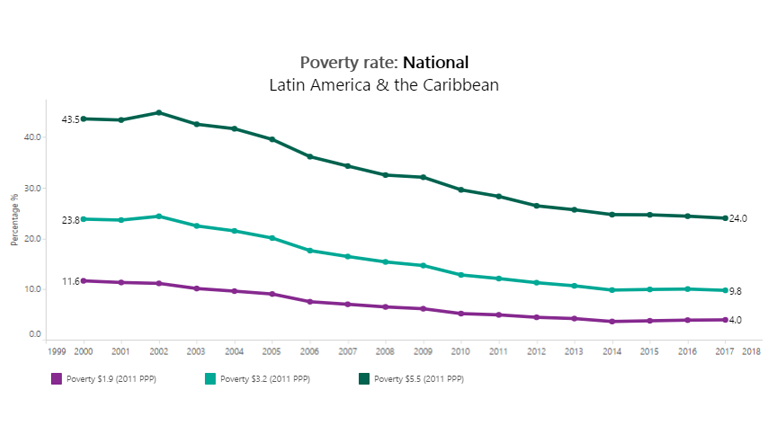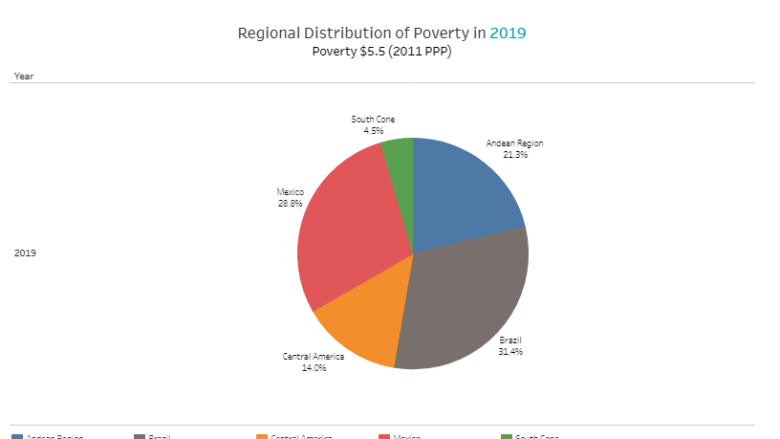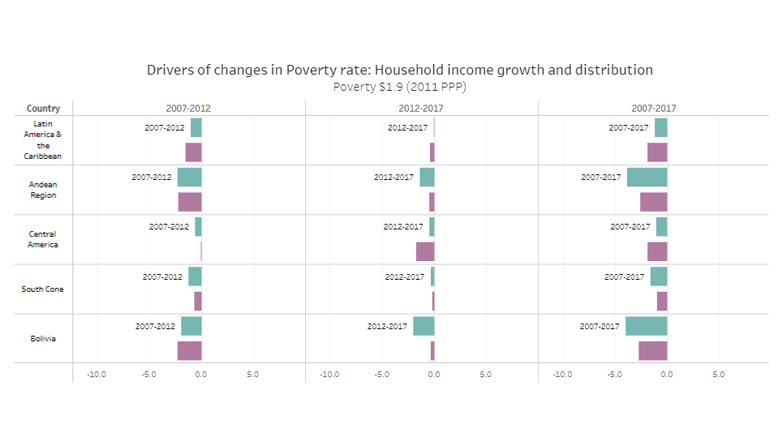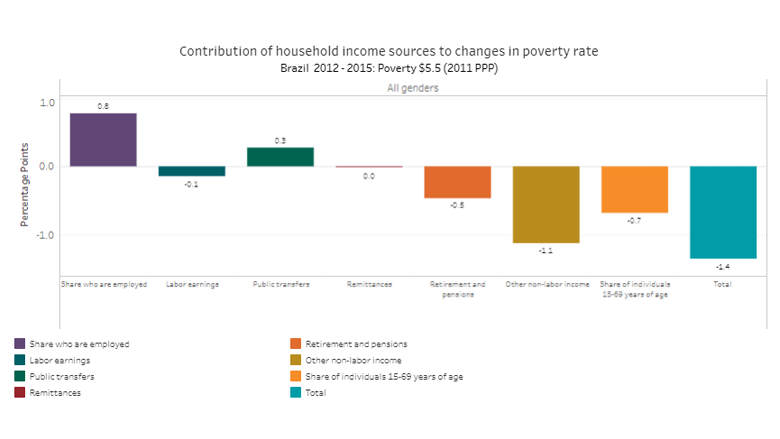The World Bank Group aims to end extreme poverty in the world by 2030, defined as decreasing the percentage of people living on less than $2.15 per day (2017 PPP prices) to no more than 3 percent of the global population. By this measure, however, most countries in Latin America and the Caribbean (LAC) have poverty rates that are much lower than their national poverty rates. The level of economic development in the region has therefore led analysts to use the World Bank's Upper Middle-Income and Lower Middle-Income country poverty lines. These correspond to $6.85 and $3.65 per person per day, expressed in 2017 PPPs.
In addition, growing interest on the vulnerable and middle classes has led to the estimation of two other sets of lines. The vulnerable population are those who are not in poverty but have a high probability of falling into poverty given a significant income shock. These are defined as those who earn between $6.85 and $14 per day (2017 PPP). The middle class are households that have a low probability of falling into poverty but are not rich. They have been defined as earning between $14 and $81 per day (2017 PPP).
The Poverty section of the LAC Equity Lab includes the following data:
 |
Poverty RateTrends in the poverty rate, the poverty gap, and the severity index under various poverty lines for the countries and sub-regions of LAC. |
 |
Regional DistributionThe share of the population under different lines for different sub-regions and by country |
 |
Poverty DriversThe main drivers of the changes in poverty in the region and by country, under different lines, and for different indicators. |
 |
Contribution of IncomeThe contribution of different income components to the overall change in either poverty or the Gini, under different poverty lines, different periods, and by country. |